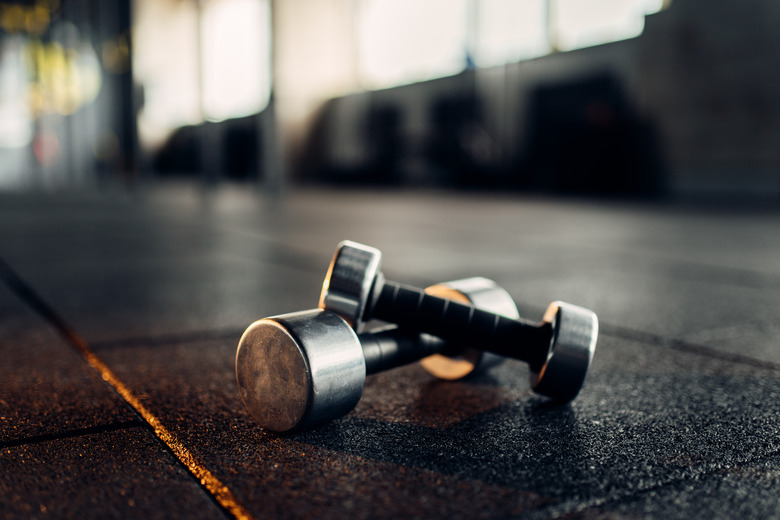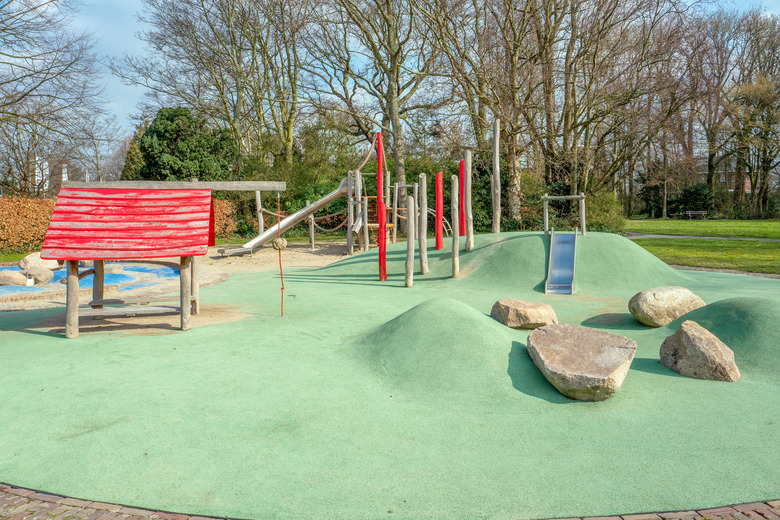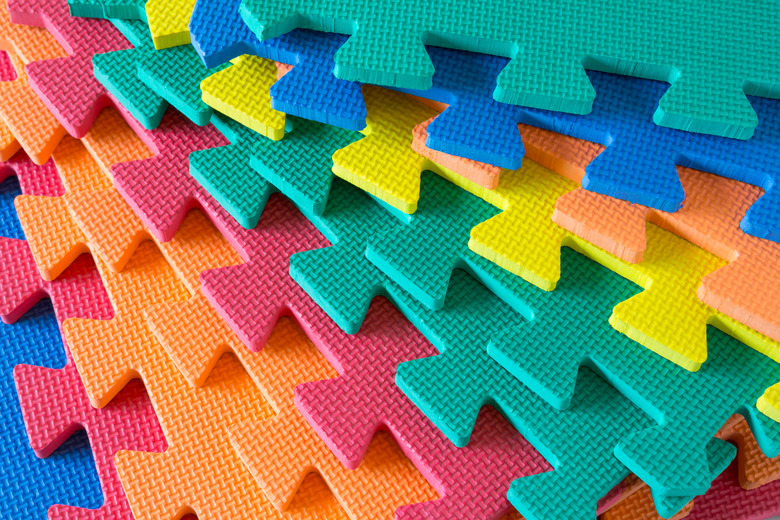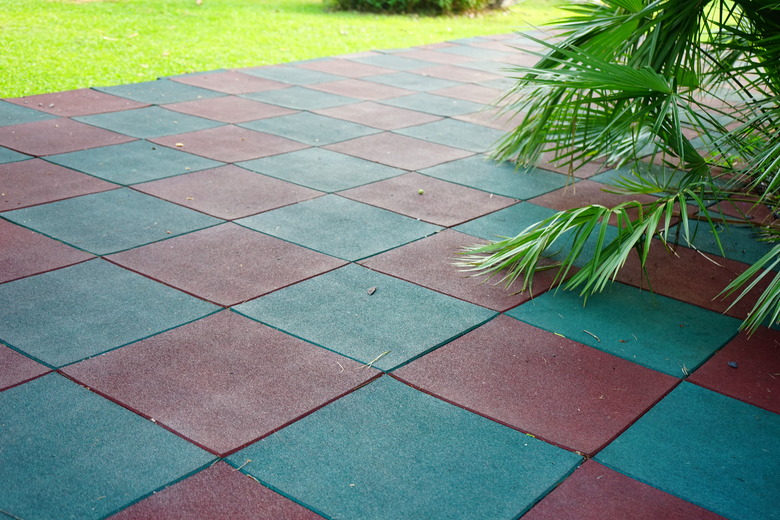Is Rubber Flooring Expensive?
You may have noticed rubber flooring in gyms, schools, building entryways or even some kitchens. It's not nearly as common or conventional in the home as other flooring types, like linoleum or hardwood, but rubber flooring can be a perfect option in some settings since it is naturally moisture resistant, a breeze to clean, and relatively easy to install.
Tip
The cost of installing and maintaining rubber flooring will depend on the type of flooring on which you decide, where it is placed and for what it will be used. Thin material and rolled mats are cheaper than rubber tiles and poured-rubber flooring options.
Types of Rubber Flooring
Types of Rubber Flooring
Rubber flooring is available in three main categories: floor tiles, floor rolls, and poured flooring. Rubber floor tiles are a very popular option for their affordability and ease of installation. This type of rubber tile is easy to assemble thanks to their edges, which are either straight or designed to interlock. You've likely seen this setup in children's play areas that have foam rubber interlocking tiles over the existing flooring. Rubber tiles are best kept in small areas of the home or commercial building.
Rolled flooring, or mats, are usually seen in areas like gyms or other spaces that have a lot of surface area to cover. Generally, this type of flooring is sold in 12- or 24-foot-long rolls that measure about 4 feet wide, although sizes can be customized to fit smaller areas. Like many rubber flooring varieties, many types of rolled mats are made from recycled rubber, like tires and roofing membranes, which makes them durable and long lasting.
Finally, poured rubber is another flooring option that is available. This type of flooring is usually seen outdoors, like on playgrounds, although some people may opt to cover spaces like their garages or pool decks with this material. Poured-in-place rubber is made up of two layers: a top or wear layer made of virgin rubber and a thick bottom layer made of shredded recycled rubber tires. While tile and rolled mats are something you could technically install yourself, poured-in-place rubber is generally better left to the pros.
How Much Does it Cost?
How Much Does it Cost?
When it comes to pricing rubber flooring, you get what you pay for (in terms of thickness, that is). Rubber flooring options are offered in a wide variety of thickness, but most commonly, you will find tiles measuring anywhere from 1/4- to 1-inch thick, with the thinner options obviously costing less than thicker types.
- Floor tiles. According to a 2019 report by HomeAdvisor, most rubber floor tiles cost an average of $10 per square foot, which includes installation costs. By this calculation, you can expect rubber floor tiles to cost between $3 and $8 per square foot, although some thin varieties can be found for as low as $1.99 per square foot, while some high-end rubber tile can cost as much as $27 per square foot, according to Rubber Flooring Inc.
- Rolled rubber mats. Rolled is easily the most affordable of the flooring options. On average, you can expect to spend around $1 to $5 per square foot when shopping for rubber mat flooring, which doesn't include the cost of installation. This type is also one of the most durable flooring options and can usually be found in gyms that see a lot of regular foot traffic and contain a lot of heavy equipment.
- Poured in place. Poured rubber is the most expensive rubber flooring option, averaging somewhere between $7 and $15 per square foot. As this type of flooring is not typically suited for DIY installation, you will need to factor in installation costs, which will, of course, vary depending on the company you choose, the amount of space you need covered and the location in which you're installing it.
Installation Costs of Rubber Floors
Installation Costs of Rubber Floors
If your rubber flooring is going to be used in an area that you aren't expecting to see a lot of regular wear and tear or foot traffic, a sturdy, double-sided tape can be enough to secure your flooring. In other cases, like commercial properties or busy gyms, an adhesive is needed to keep your rubber flooring in place.
The thickness of your flooring will also determine the type of adhesive required to keep your flooring in place, with thicker types relying on polyurethane adhesive. One gallon of adhesive generally covers around 75 to 100 square feet, depending on the brand, and typically costs between $50 and $75.
A professional installation and the labor involved will obviously cost a bit more. Generally, the more corners in your room, the more the installation will cost you since time will be spent measuring and cutting your rubber flooring to fit. If your subfloor is in need of repairs or a new underlayment, this will also increase the cost of installation, generally by about $30 per square foot. Poured-in-place rubber flooring will cost the most to install. You can expect to pay somewhere around $3 per square foot.
Maintaining Your Rubber Floors
Maintaining Your Rubber Floors
Depending on the quality and thickness of your rubber flooring option, your floor could last anywhere from five to 20 years assuming it is located in a home where constant foot traffic isn't something to which it's exposed. In commercial settings, that number could drop down to something closer to just a few years, with thicker varieties lasting longer. Like any other type of flooring, regular cleaning and upkeep will be your best bet in maintaining your rubber floors, keeping them durable and long lasting.
To keep your rubber floors clean and in good shape, Old House Journal recommends washing them regularly with cool water and a small amount of ammonia. If you have a lot of dirt on your floors, you can add several drops of an oil-based soap to your cleaning solution. Just be sure to avoid pine oil, turpentine and naphtha-based cleaners. Once everything has been mopped or wiped clean, rinse the surface with clean water.
Things to Keep in Mind
Things to Keep in Mind
When you factor in the costs of rubber flooring for your home or project, one thing to keep in mind is the warranty that comes with the flooring of your choice. Oftentimes, warranties will not be recognized if the homeowner has decided to go with a DIY installation, so hiring a company to install your rubber flooring may be a more cost-effective solution in the long run.



